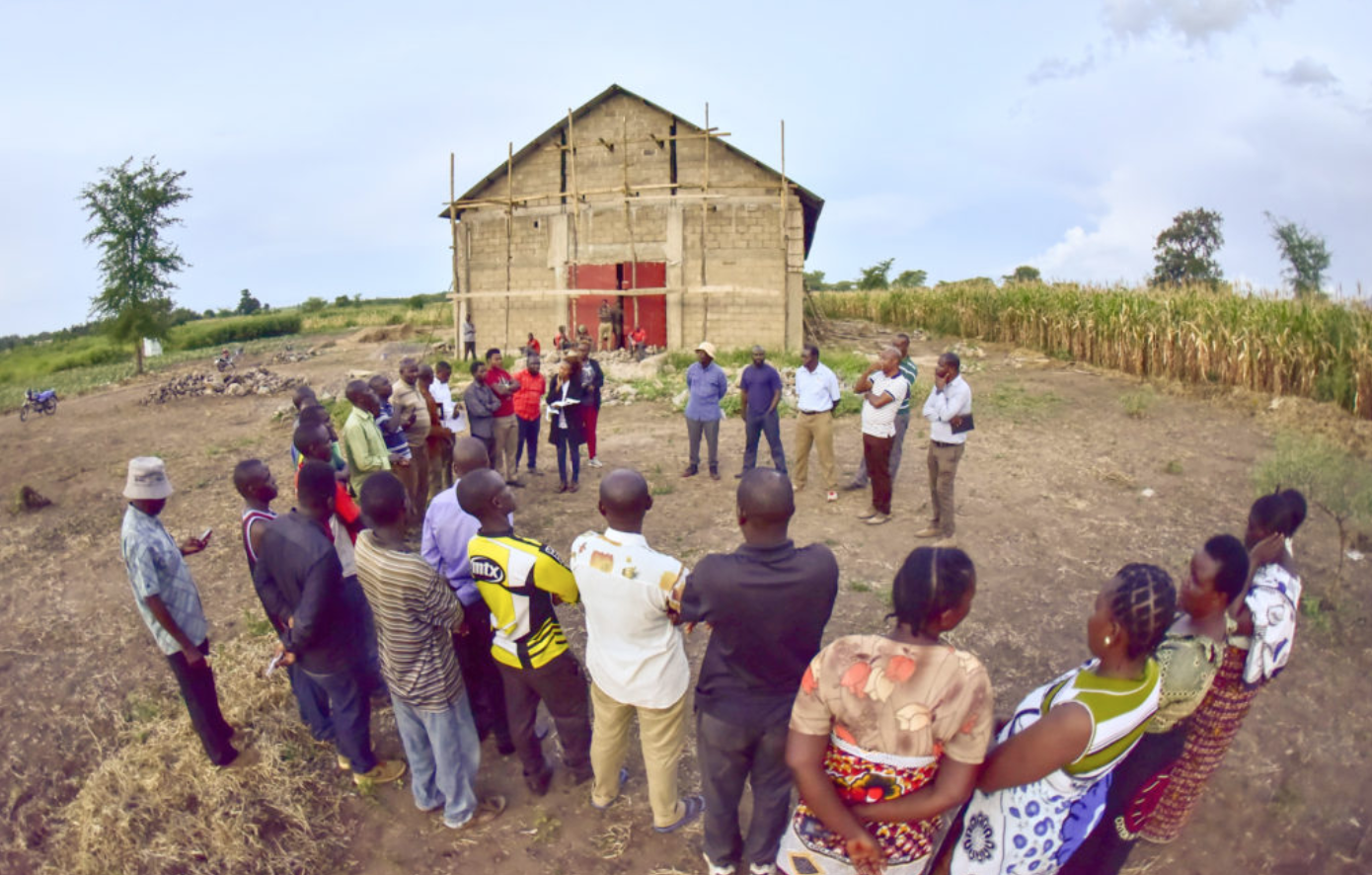By Anthony Muchoki
“Sometimes it looks unreal. It is like a miracle. Yes, it is a miracle… we never thought in our lifetime, we would be able to have a warehouse as big as this one- yes, and belonging to us- the smallholder farmers!”
It is Mr. Osphard Sinkala, talking, looking at an imposing warehouse, under construction, with (40x12x5) m3 dimensions and ability to store about 450MT of paddy/maize, when completed.
Mr. Sinkala is the chairman of farmers’ organization (FO) known as Sakalilo Amcos, at Sakalilo Village, Sumbawanga District, Rukwa Region. The FO owns the warehouse, which by April 2019 was about 85 percent complete. When ready, it will serve over 2,300 smallholder paddy farmers.
The FO has 116 active members, of which 45 are female. After the construction of the warehouse, over 500 villagers have applied to join the FO. Their membership will be approved or disapproved in the next general meeting.
At the moment as in the past, villagers with extraordinary good harvests have a huge “storage” problem.
There are times, their houses and home granaries are filled up and they have to store the paddy under mongo trees or makeshift tents, leaving it exposed to waste away, as the pain of farmers.
“Lack of proper storage facilities at times make farmers lose over 50 percent of their produce. Those storing outside the house sometimes they lose everything,” he notes.
Farmers have been wanting to start using the warehouse, while incomplete and had to be stopped. The prices of paddy at the moment/ April 2019, stands at Tsh 30,000 to Tsh 40,000 per a sack of “7 debe” which can come to about 75kg to 90 Kg.
It’s notable these are illegal measurements in Tanzania, but farmers have no option at the moment.
At the end of the day, the buyers gain unfairly as the farmers struggle to make ends meet. “The warehouse will change all this and ensure farmers get fair prices… then will no longer be in a hurry to sell at throwaway prices,” Mr. Sinkala notes.
The construction of the warehouse started in May 2018, with financial support from Alliance for a Green Revolution in Africa (AGRA) through what farmers have code-named “Kilimo Tija” project.
Farmer leaders, local government and central government were all involved in deciding that Sakalilo village, was a suitable site, to put up a center of aggregation in the lower side of Ufipa Plateau. The decision arrived through sieving challenges and opportunities from ward-to-ward and village-to-village in the cluster notes Mr. Japhet Laizer, Associate Program Officer at Alliance for a Green Revolution in Africa (AGRA) – SUKA Consortium.
He assures that the construction will be completed soon and farmers will utilize this facility for 2018/19 harvest. The storage facility will enable smallholder farmers to aggregate huge volume of paddy, reducing post-harvest losses, negotiate market terms while reaping better price. “The location is great as Ufipa Plateau has in place irrigation infrastructures for more paddy production, notes Mr. Laizer.
“All the surrounding villages despite having high paddy production, proper storage facilities are very limited. This causes massive post-harvest losses and farmers get lower returns as they have to sell their produce shortly after harvest when prices are very low,” he notes.
According to Mr. Laizer, the implementation of the project was done in the spirit of public-private partnership (P-P-P). Sakalilo Amcos which is owned and managed by smallholder farmers bought a plot of land at a cost of 304 USD, but also contributed sweat capital, collecting stone, sand, laying the foundation which was estimated to cost 3,981 USD and thus making total contribution of 4,285 USD from local communities. where the warehouse has been built. AGRA support for the project through PiATA TIJA initiatives was 35,000 USD for construction. Famers contributed labor and provision of some materials for construction. The government provided technical support and structural engineering during the exercise.
“After completion, then farmers have plans to bring in processing machines and all this are important so that, they can start getting value for money,” he notes.
Mr. Chrisanti Ilumba, Sakalilo Amcos Marketing Manager, noted that the marketing linkages created by “Kilimo TIJA” project between farmers, and aggregation centers and buyers, was key to uplifting farmers’ living standards and ensure sustainable business relationships between actors in the value chains.
Farmers around the villages have been trained by the project about Good agricultural practices, good post-harvest handling practices, technologies, warehouse management, business skills, contract negotiations and crop aggregation among other things.
Mr. Vianey Rweyendela, AGRA Country Manager, notes that to cut post-harvest losses due to poor or lack of storage facilities for smallholder farmers reliable and accessible warehouses are a must, and where farmers can own and have control, it becomes even much better.
Diverse studies indicate that farmers lose at times up to 40% of their produce after harvest due to poor handling or lack of suitable storage facilities.
End
